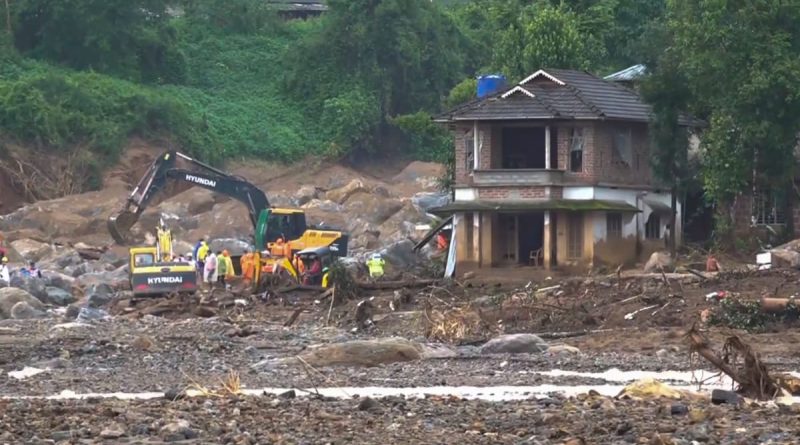Study Finds Wayanad Landsline Connected to 10% Increased Rainfall Due to Climate Change
The study stated that approximately 59 percent of total landslides in Kerala have occurred in plantation areas.
New Delhi:
The fatal landslides in Kerala’s ecologically delicate Wayanad district were set off by an intense burst of rainfall, amplified by 10 percent due to climate change, as per a new swift attribution study by an international team of scientists.
Experts from India, Sweden, the US, and the UK cautioned that such incidents will become more frequent as the climate keeps getting warmer.
To gauge the impact of human-induced climate change, the researchers from the World Weather Attribution (WWA) group scrutinized climate models with sufficient precision to accurately represent rainfall in the relatively small study region.
The models revealed that the intensity of rainfall has surged by 10 percent because of climate change, they indicated.
The models also anticipate a further four percent rise in rainfall intensity if the mean global temperature escalates by two degrees Celsius compared to the 1850-1900 average.
Nevertheless, the scientists mentioned that there is a “considerable level of uncertainty” in the model outcomes as the study area is limited and mountainous with intricate rainfall-climate dynamics.
Having mentioned that, the escalation in heavy one-day rainfall occurrences is in harmony with a growing body of scientific proof on extreme rainfall in a warming world, including in India, and the realization that a warmer atmosphere retains more moisture, resulting in heavier downpours.
As per scientists, the atmosphere’s potential to hold moisture rises by about 7 percent for every one-degree Celsius surge in global temperature.
The Earth’s global surface temperature has already climbed by approximately 1.3 degrees Celsius due to the swiftly escalating concentration of greenhouse gases, predominantly carbon dioxide and methane. Scientists assert that this is the cause of exacerbating extreme weather incidents, such as droughts, heatwaves, and floods worldwide.
The WWA scientists mentioned that while the correlation between land cover, land use changes, and landslide risk in Wayanad is not entirely evident from existing research, elements such as quarrying for construction materials and a 62 percent decrease in forest cover might have heightened the slopes’ vulnerability to landslides during heavy rainfall.
Other researchers have also associated the Wayanad landslides with a blend of forest cover depletion, mining in fragile terrain, and prolonged rain followed by intense precipitation.
S Abhilash, the head of the Advanced Centre for Atmospheric Radar Research at Cochin University of Science and Technology (CUSAT), had formerly informed PTI that the warming of the Arabian Sea is producing deep cloud formations, resulting in extremely heavy rainfall in Kerala in a brief period and upping the landslide risk.
“Our investigation revealed that the southeast Arabian Sea is getting warmer, causing the atmosphere over Kerala to become thermodynamically unstable. This instability enables the development of deep clouds,” he had stated.
According to the landslide atlas released by ISRO’s National Remote Sensing Centre last year, 10 out of the top 30 landslide-prone districts in India are in Kerala, with Wayanad positioned at the 13th place.
A study released by Springer in 2021 indicated that all landslide hotspots in Kerala are in the Western Ghats region and are concentrated in Idukki, Ernakulam, Kottayam, Wayanad, Kozhikode, and Malappuram districts.
It was observed that about 59 percent of total landslides in Kerala have taken place in plantation areas.
A 2022 study on diminishing forest cover in Wayanad disclosed that 62 percent of forests in the district vanished between 1950 and 2018, while plantation cover surged by around 1,800 percent.
Waiting for response to load…

